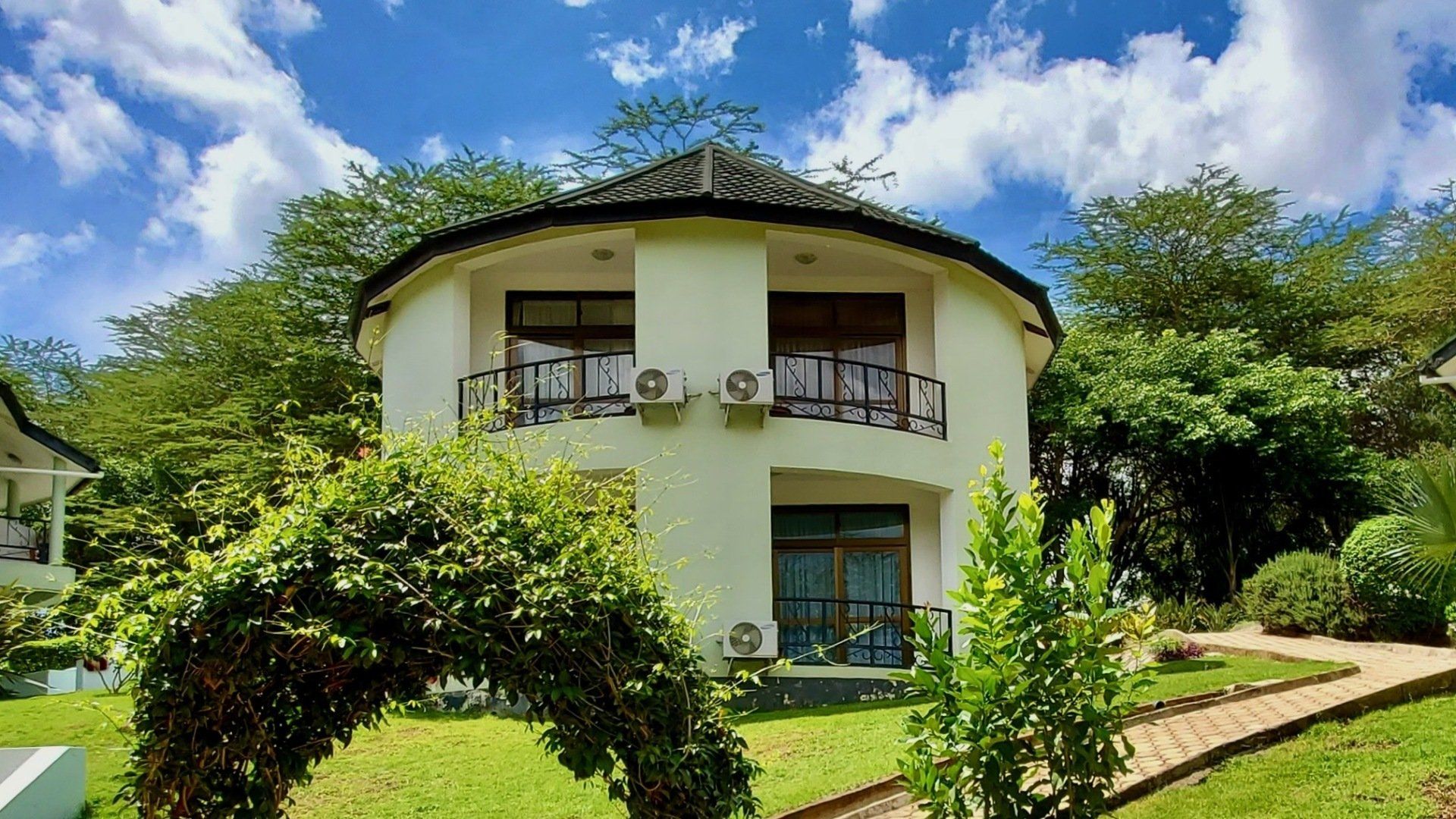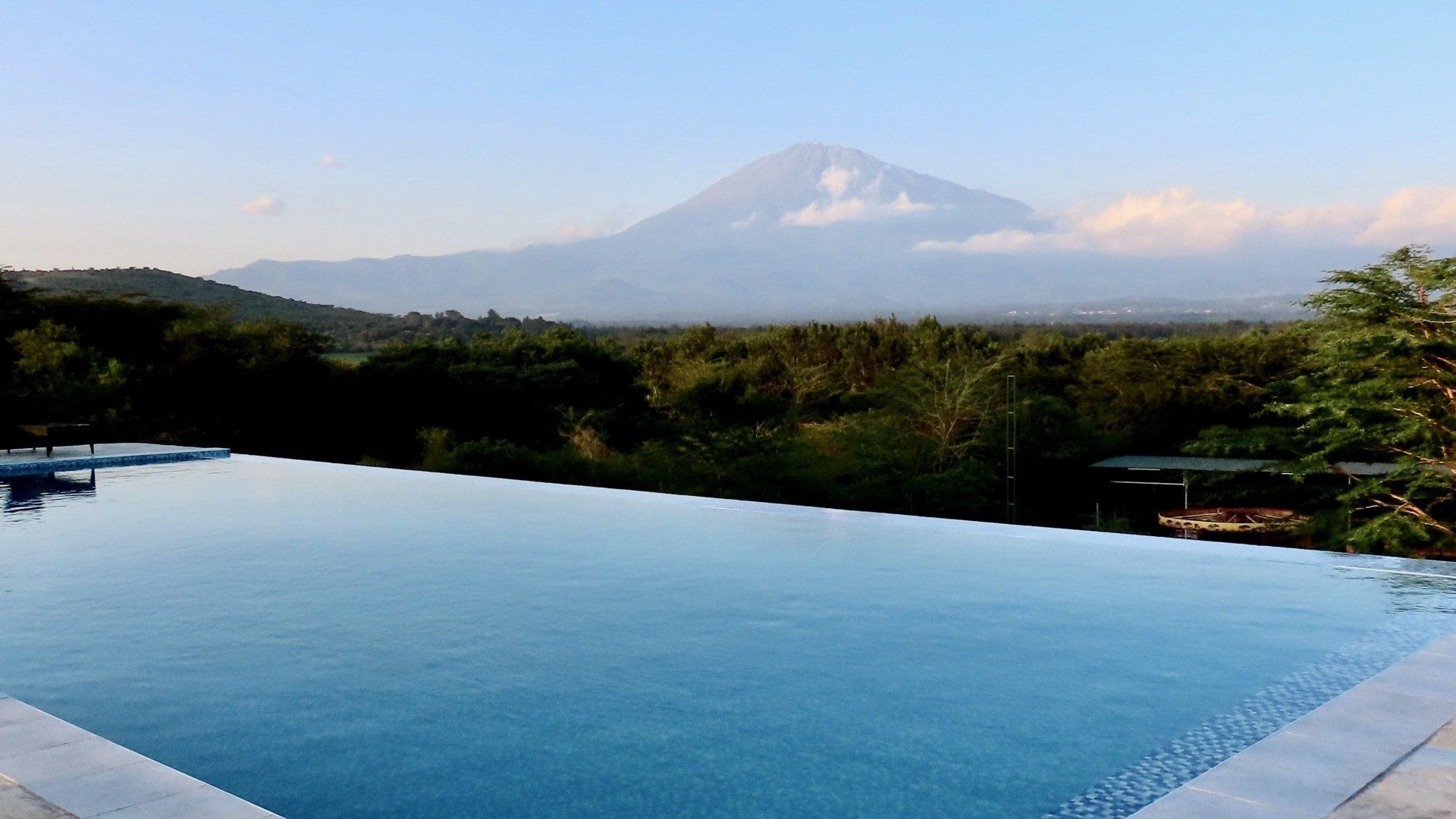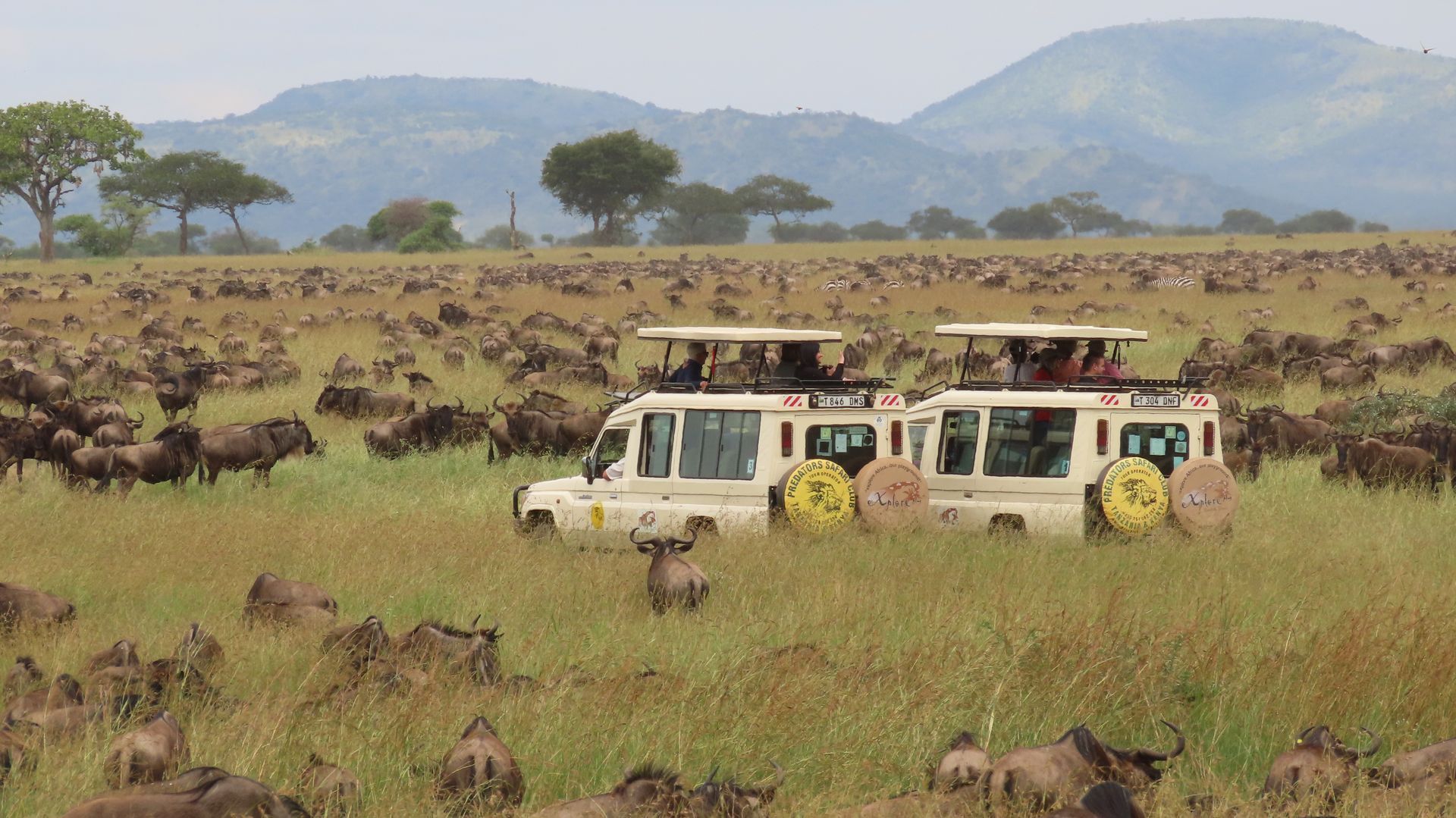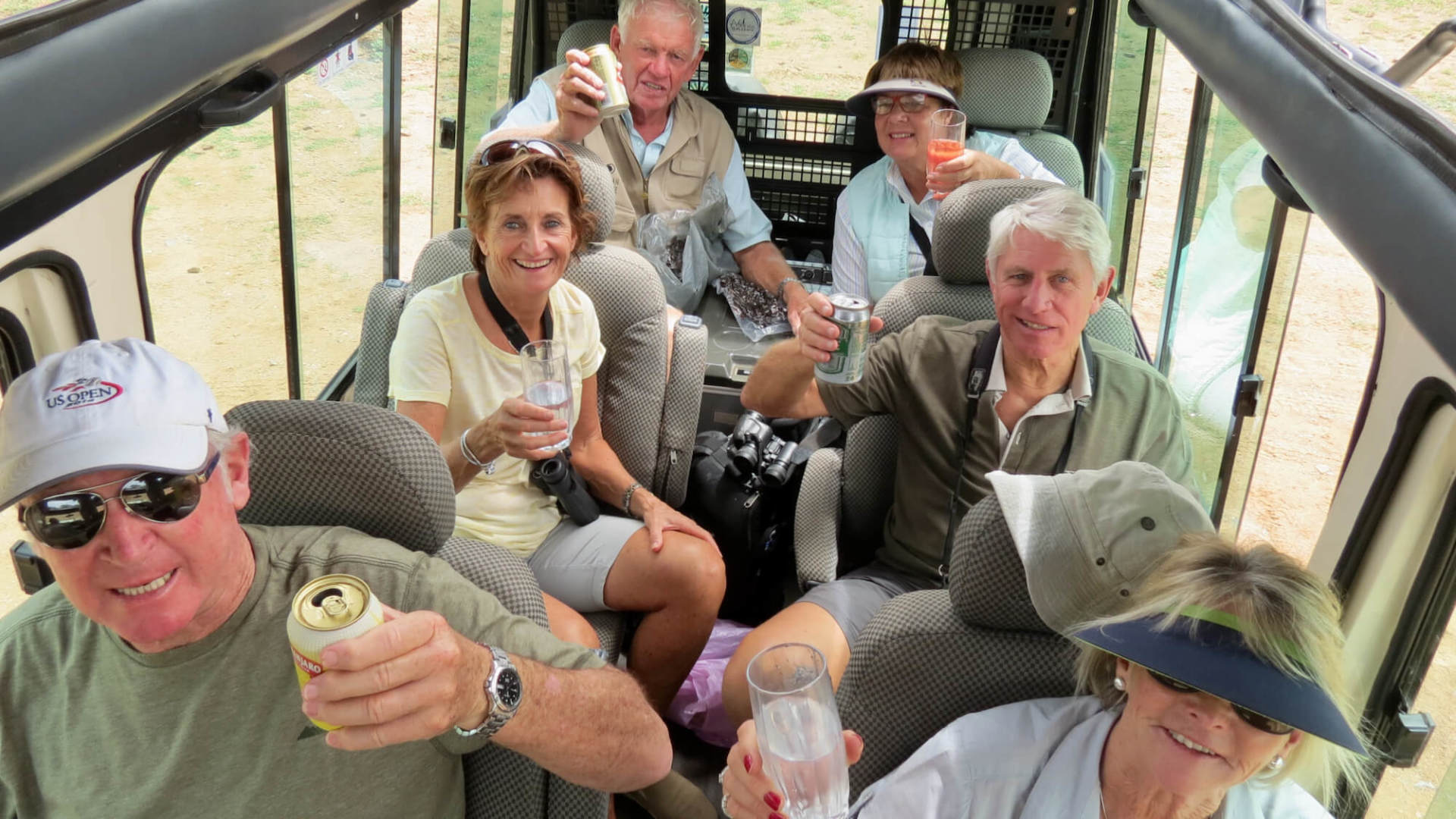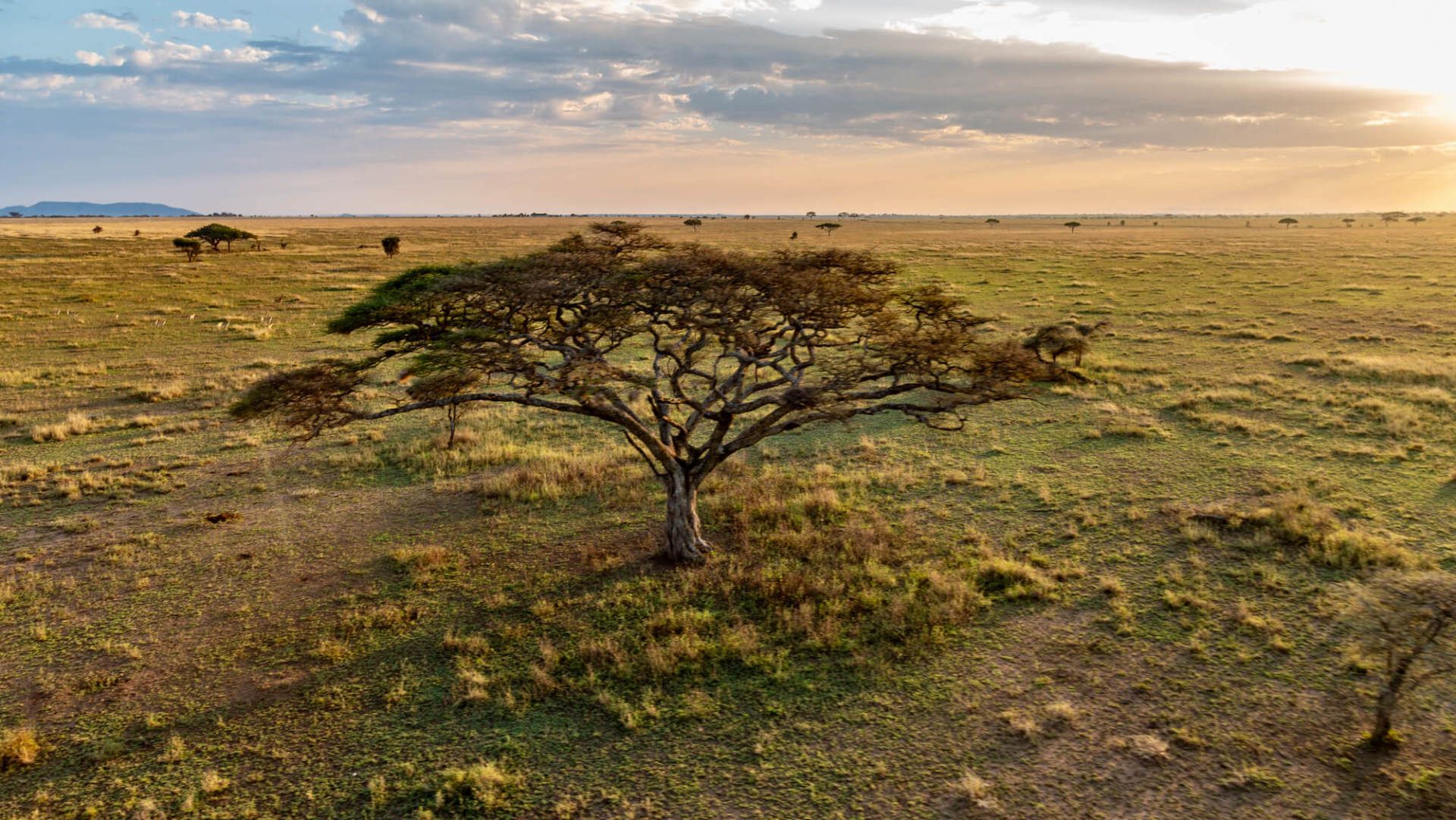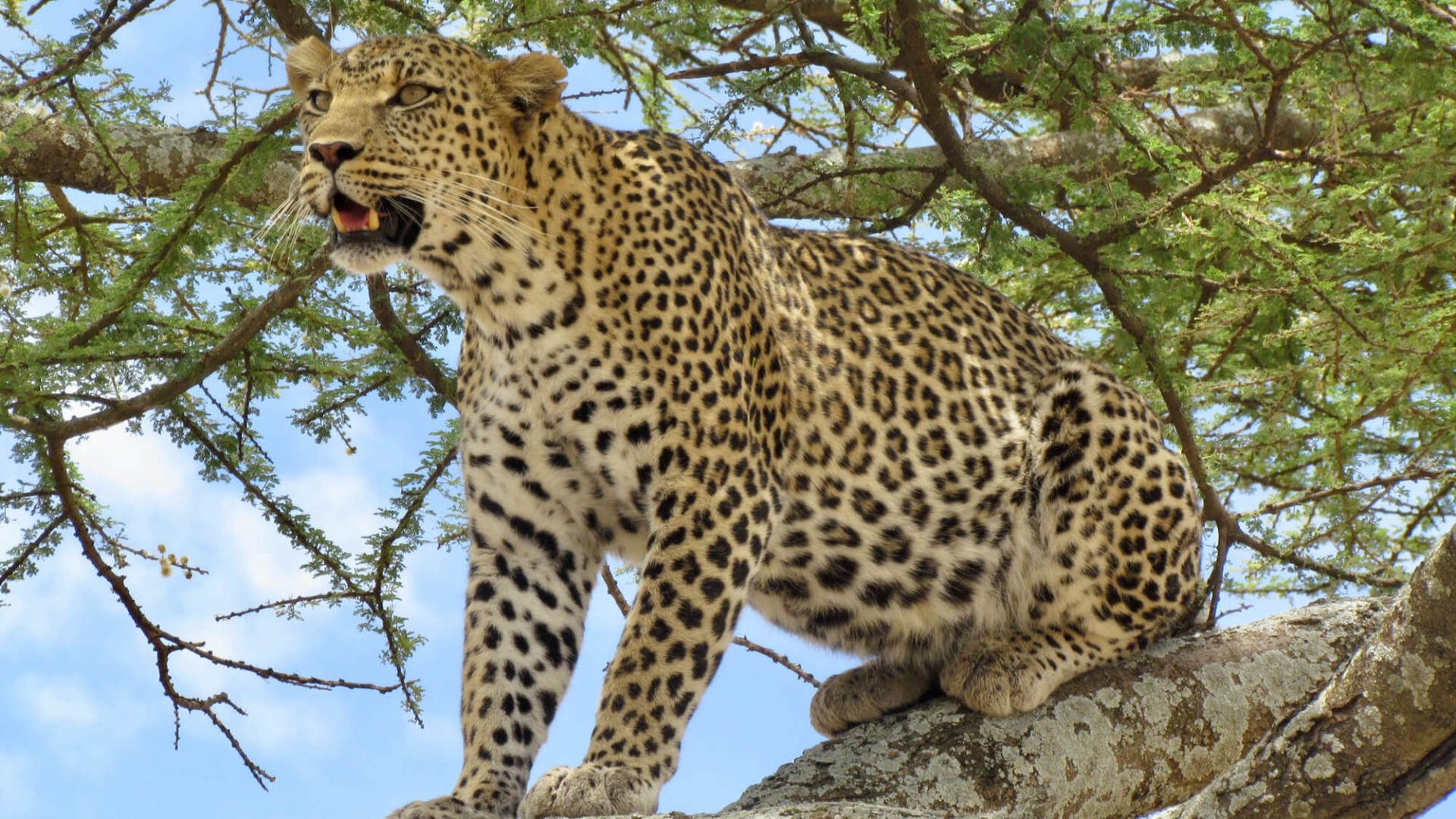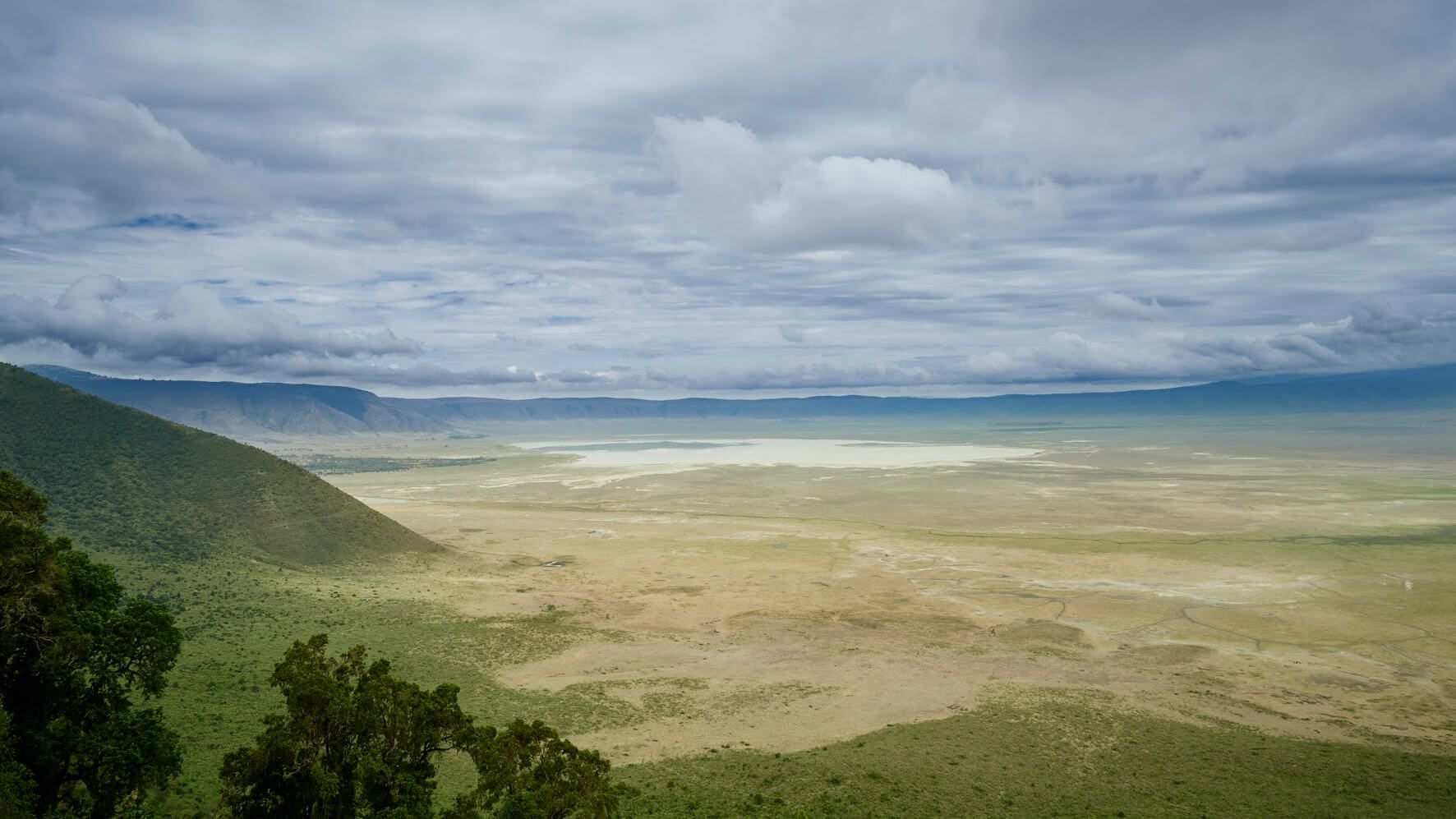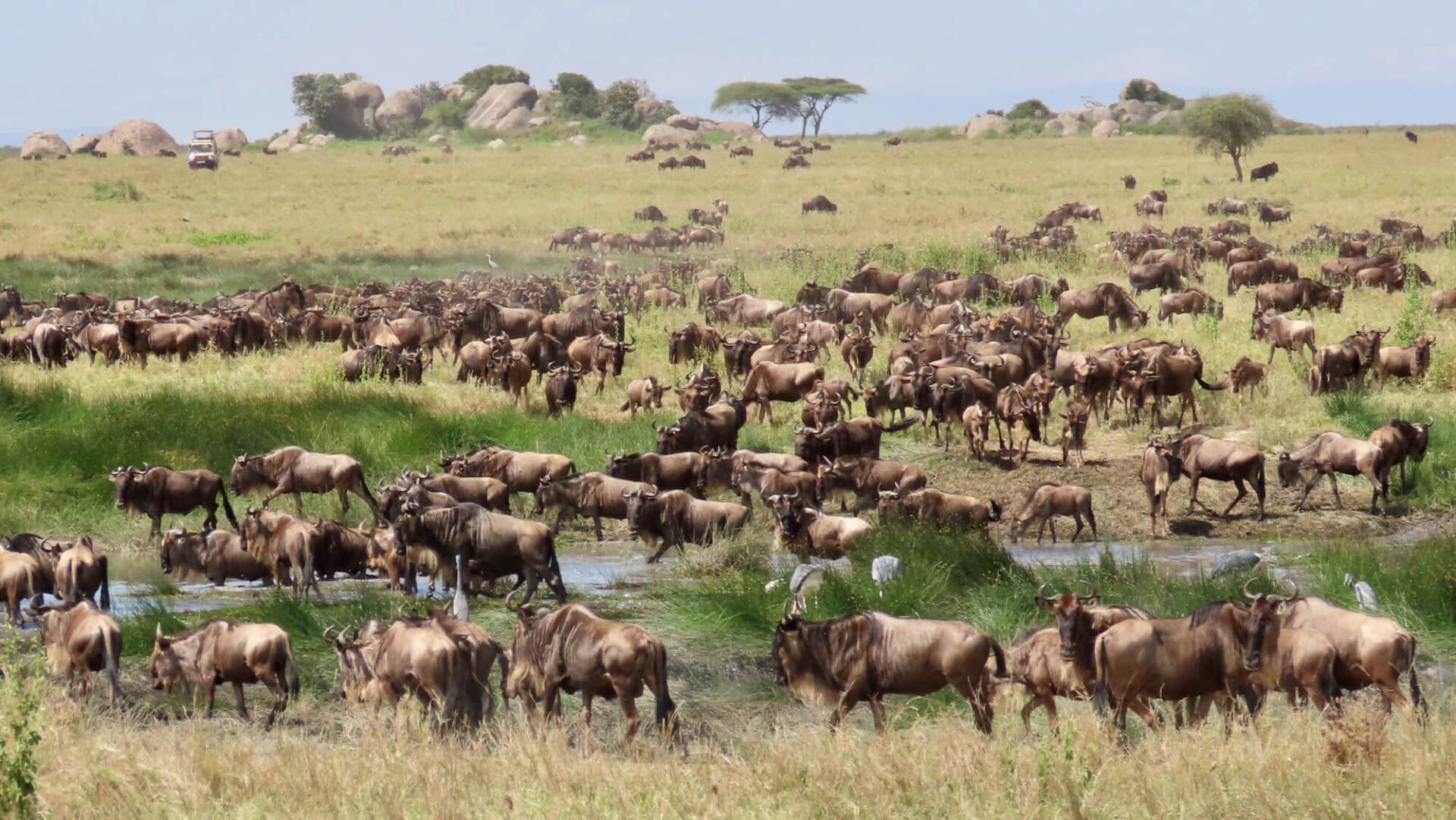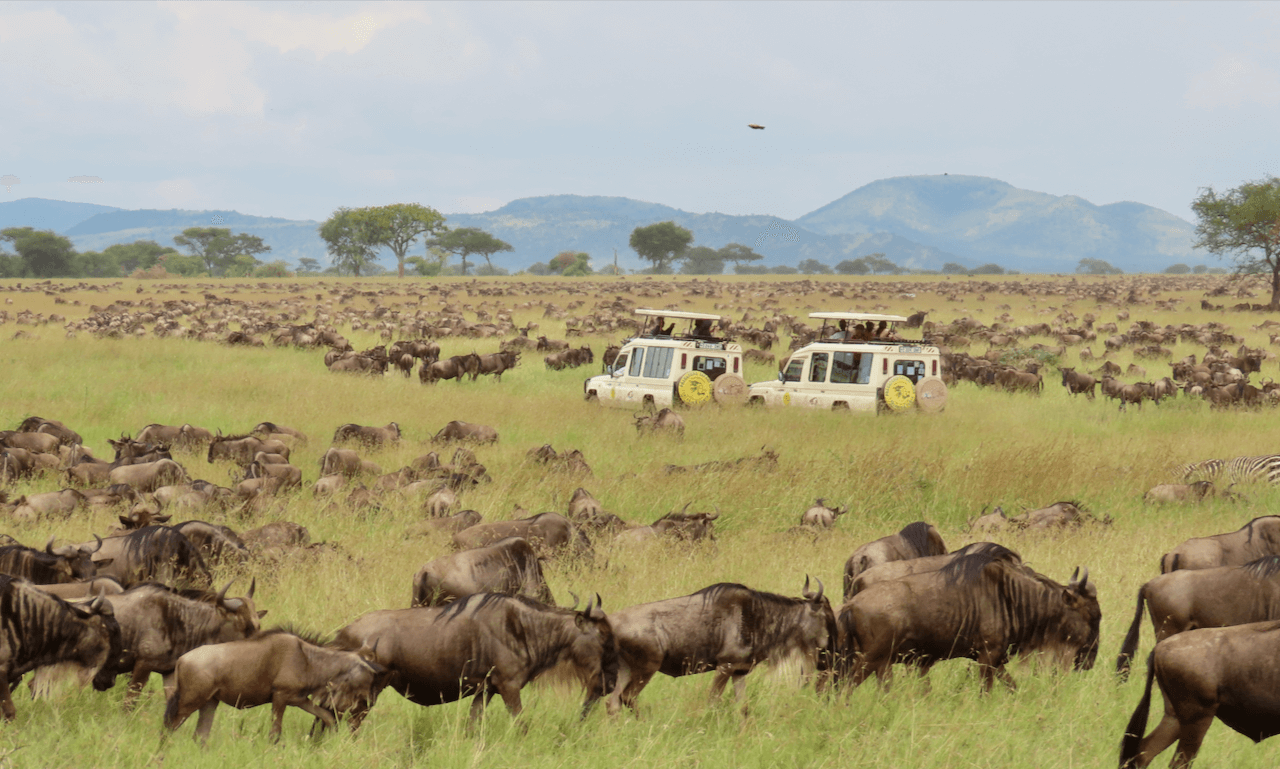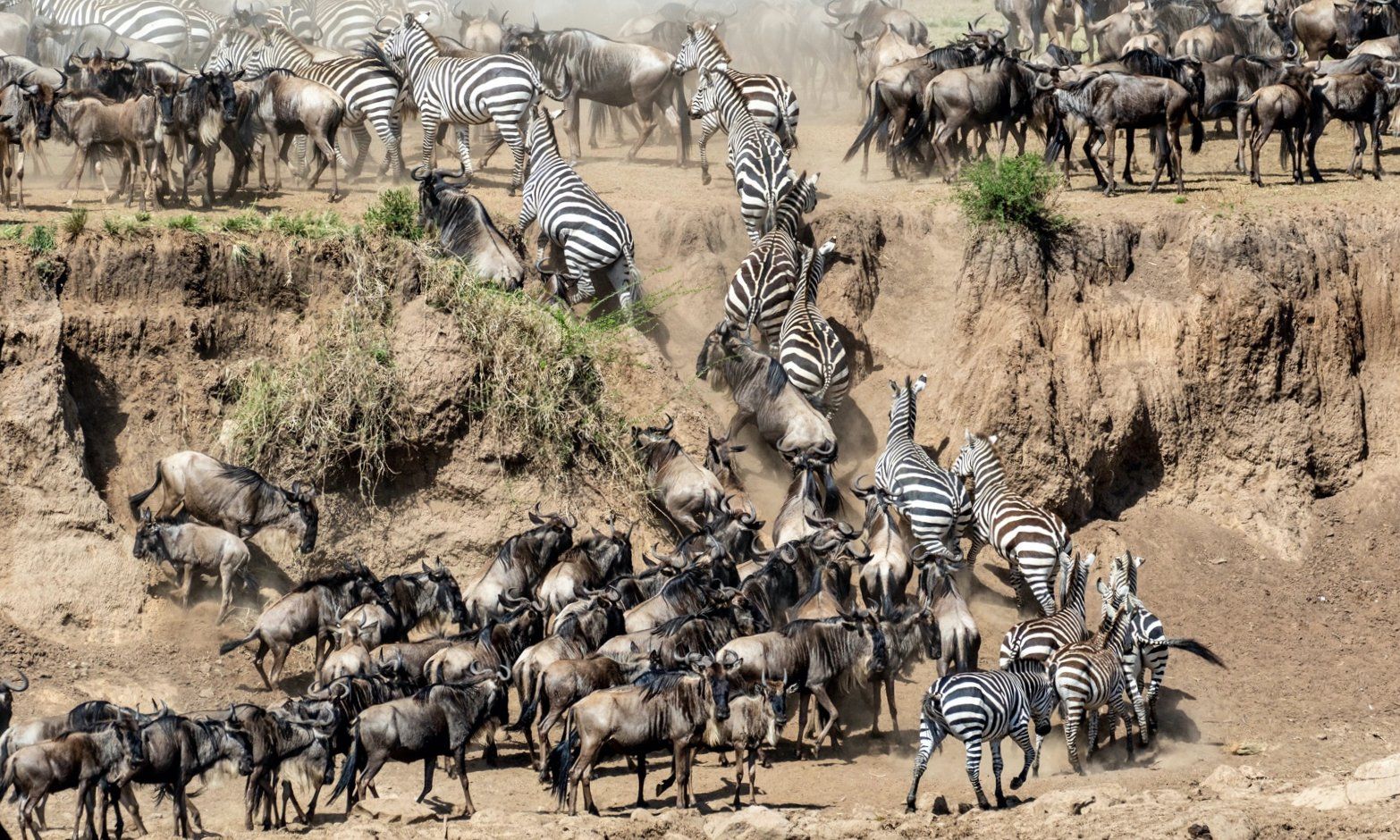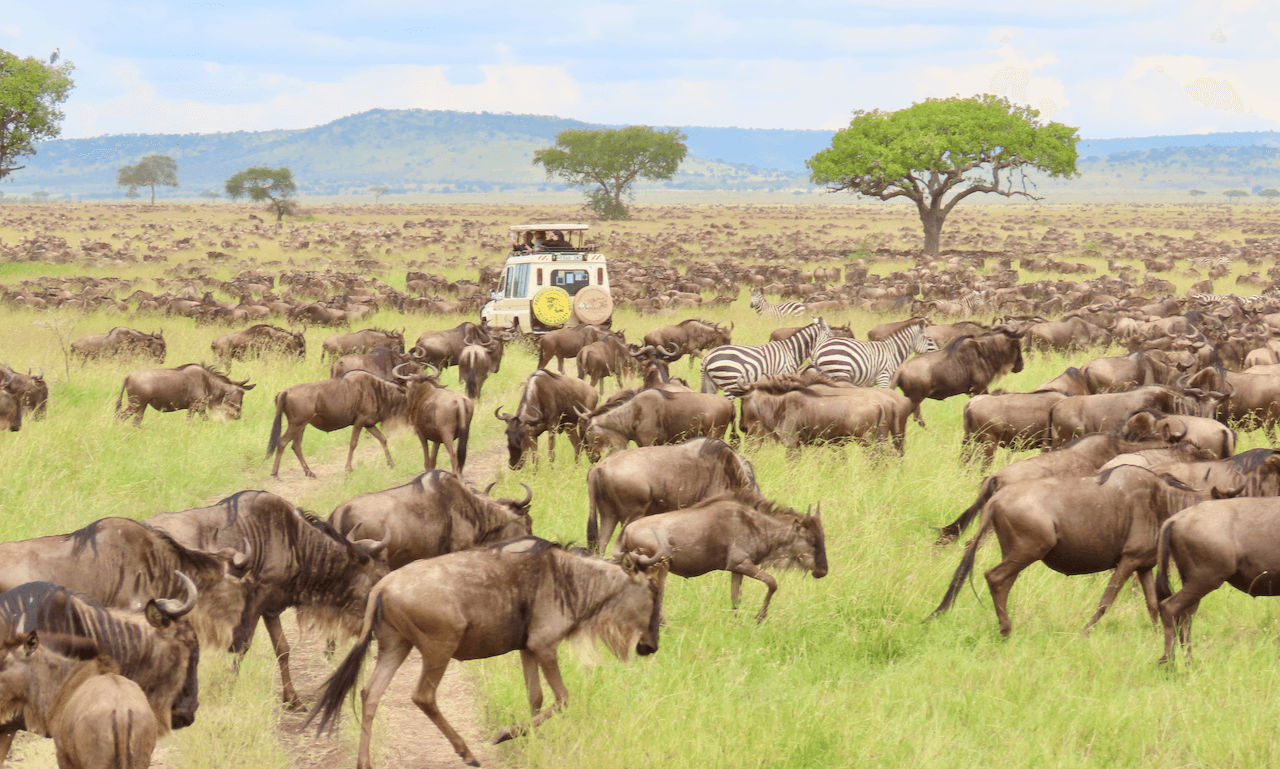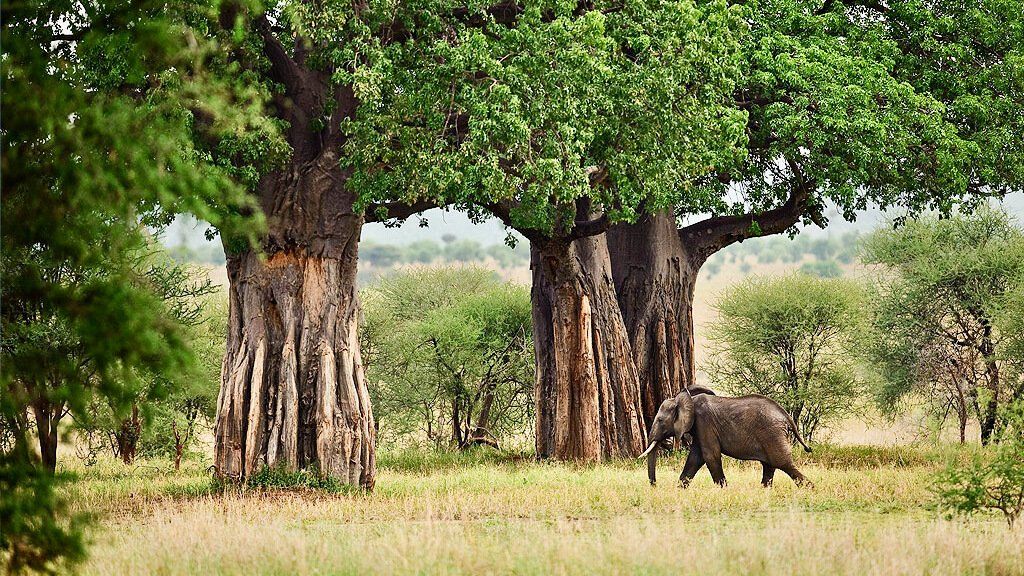This 7-day Wildebeest Migration Safari offers a balance of adventure and comfort, with selected lodges and permanent tented camps that offer great value for money without sacrificing comfort. All tented lodges have Meru Tents and en-suite bathrooms.
Search for the “Big Five” in the scenic Tarangire, the wildlife-teeming Ngorongoro Crater and the plains of the Serengeti .
(Road Safari)
Our small group safaris offer the opportunity to explore Tanzania while enjoying the company of an intimate group of like-minded safari enthusiasts, on a set itinerary.
Itinerary
Dates & Prices
Dates:
SMALL GROUP DEPARTURE DATES:
This 07-Day Taste of Tanzania Migration Safaris depart during May on set departure dates.
18 - 24 May 2026
25 - 31 May 2026
Rates:
| SA RESIDENTS: | INTERNATIONAL: | |
|---|---|---|
| R45,105.00 pp sharing | Please contact one of our consultants | |
| Flights from Johannesbrug: | R9,300.00 pp |
- Exchange rate used (bank selling rate): R18.00 to US$1.00
- Request a quote from our Safari Specialists for the most current rates and availability on our group departures.
- Please treat all pricing as a guide only.
- All rates are subject to increases beyond our control, including fuel price, government taxes and exchange rate fluctuations.
- Maximum 18 clients per safari, with a maximum of 6 clients per vehicle.
National Parks
Tarangire National Park
Tarangire is a long, thin park covering 1,360 sq. km, roughly running north south along the line of the Tarangire River. It is made up chiefly of low-lying, rolling hills on the Rift floor, its natural vegetation of acacia woodland and giant baobabs only altered by huge areas of swamp. The swamps of black cotton mud produce rich grasslands, while the watercourses are lined by huge trees, including sycamore fig, tamarind, and sausage trees.
Serengeti National Park
The Serengeti’s endless plains is a UNESCO World Heritage Site and is patrolled by Africa’s big cats, elephants, buffaloes, gazelles and giraffes and is perhaps most famous for the migration of animals, specifically the Serengeti wildebeest migration. The principle players are the wildebeest, whose numbers appear to have increased to about 2 million. In addition, about 250,000 zebras make the seasonal journey to fresh pastures, first to the north, then the south after the rains. Their ancient instinct to move is so strong that no drought, gorge or crocodile-infested river can hold them back. In February the wildebeest cows drop their young in a synchronized birthing that sees some 300 000 to 400 000 calves born within two to three weeks.
Bird watching in the Serengeti is good all year round, at its very best from November to April.This is when European and North African migratory birds are present for resident species.



